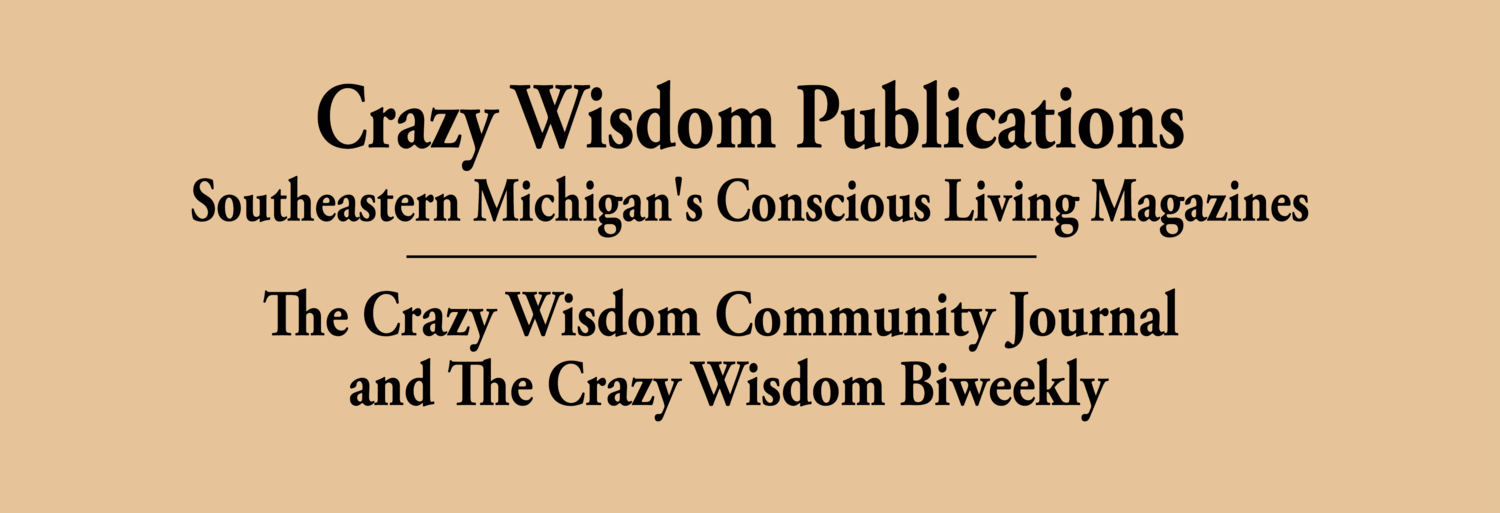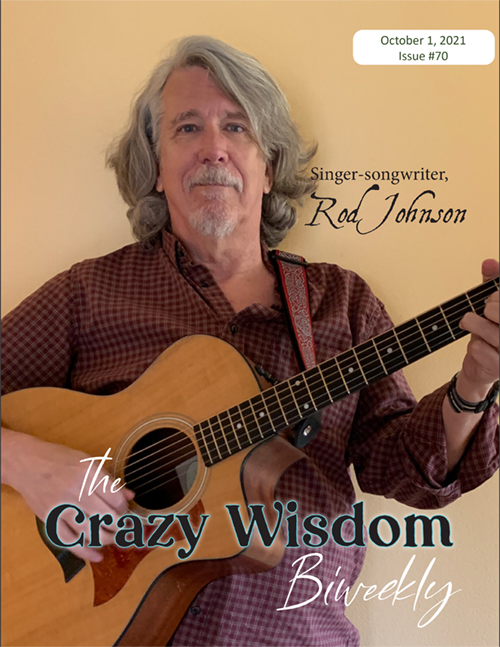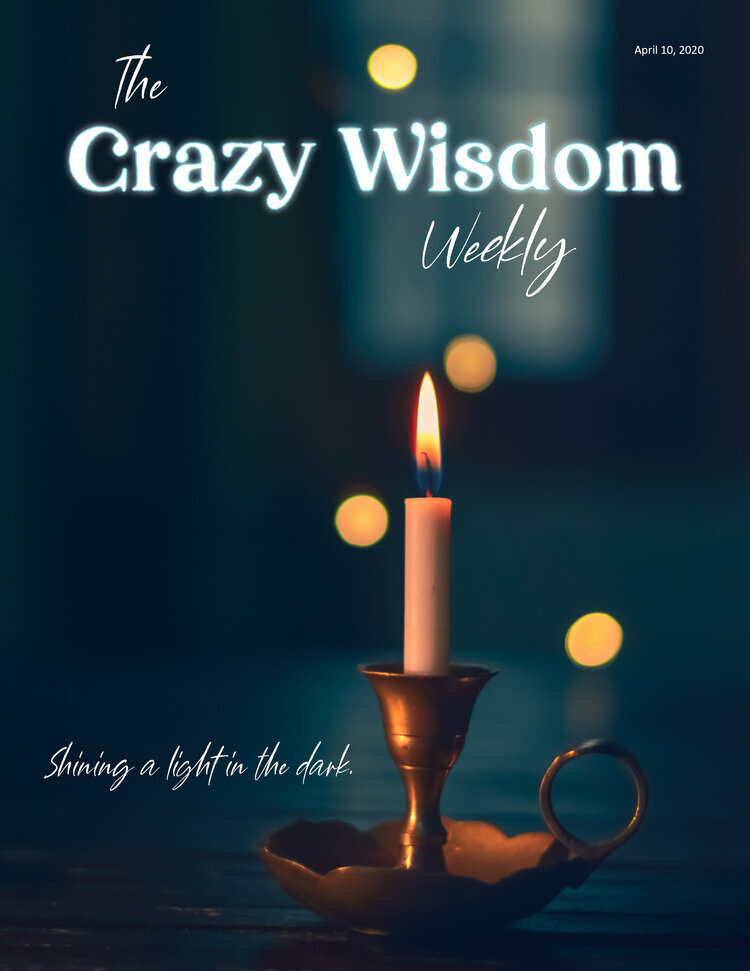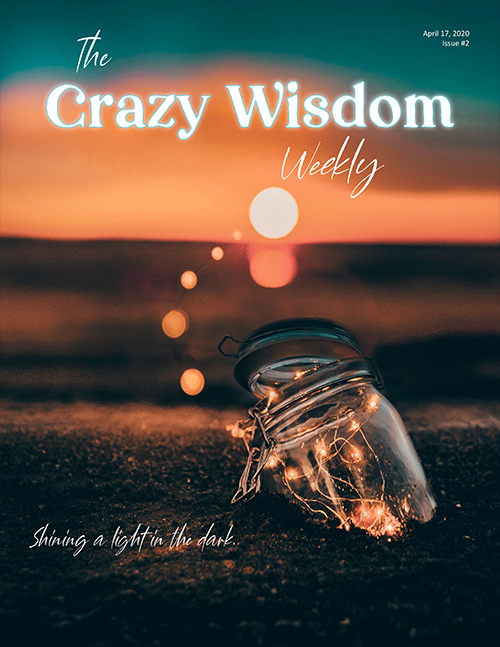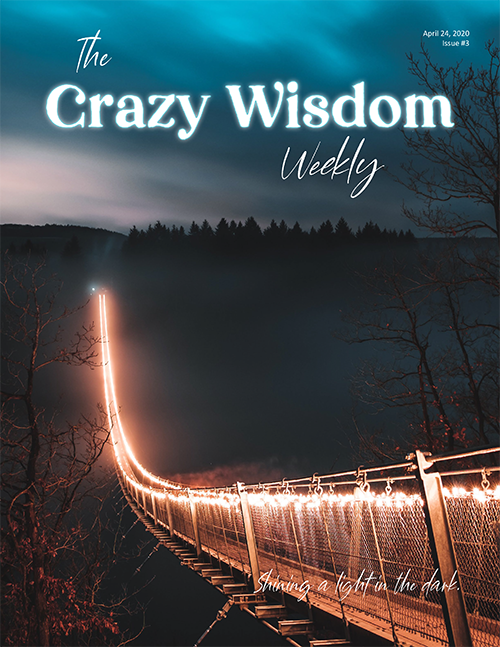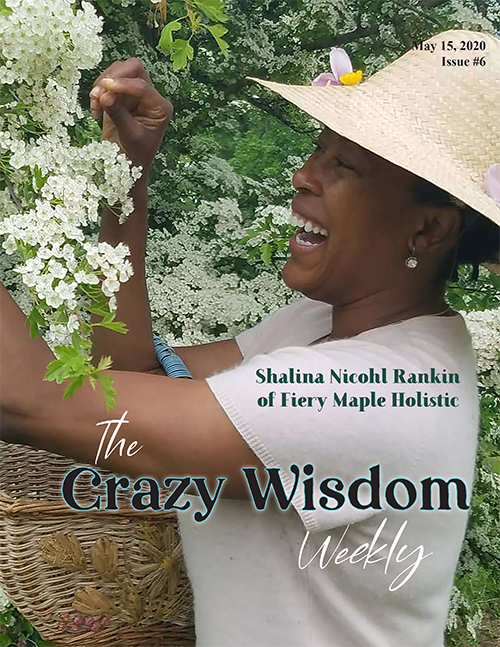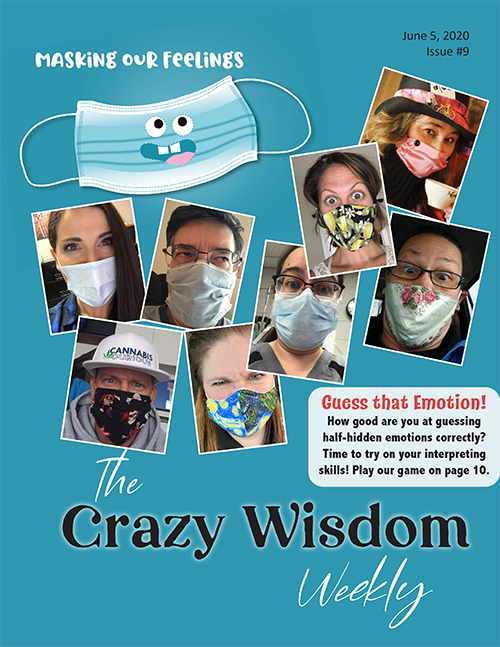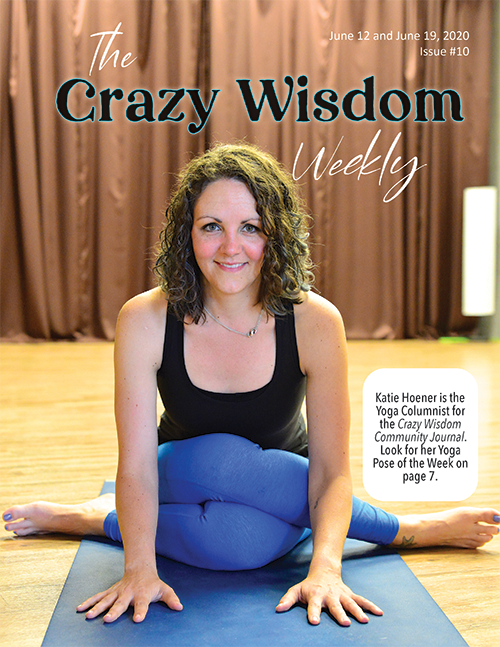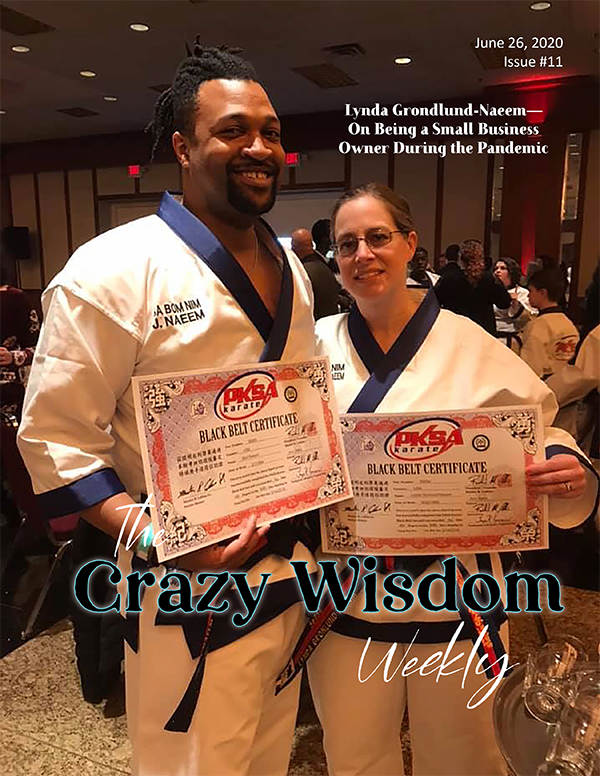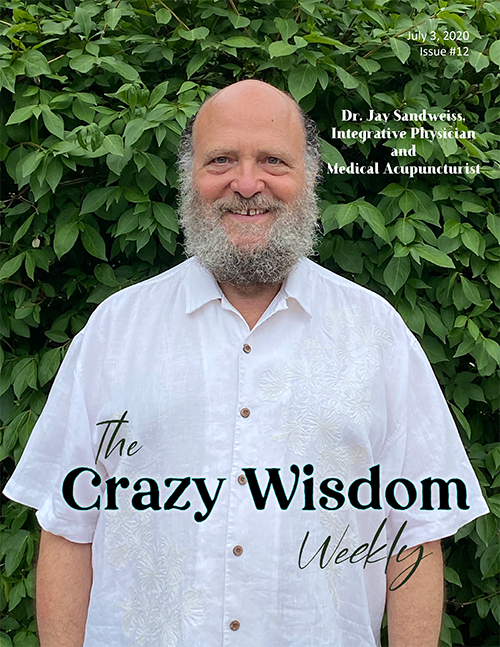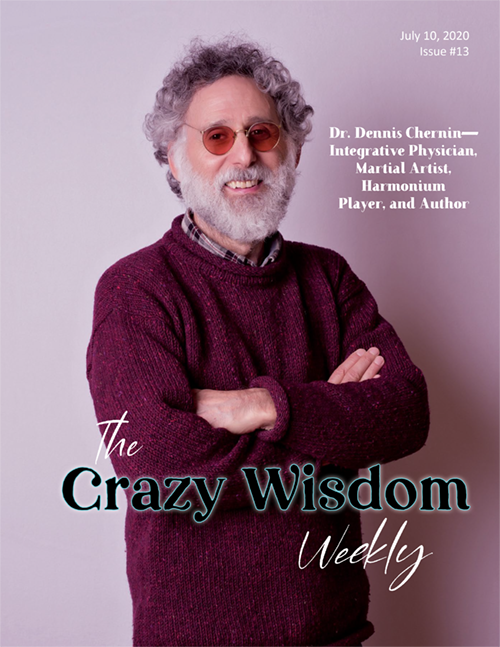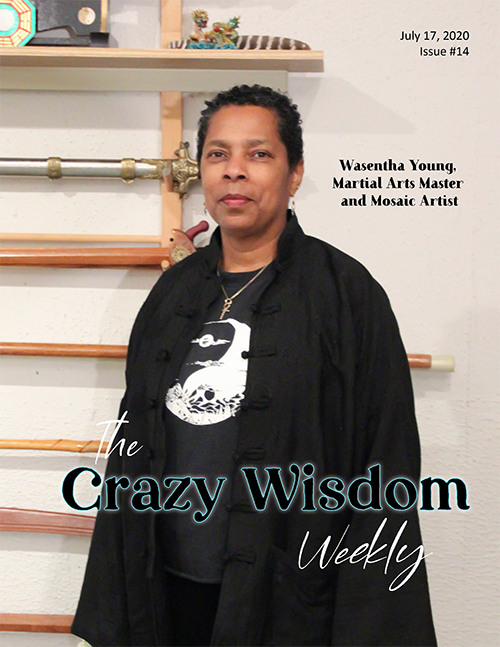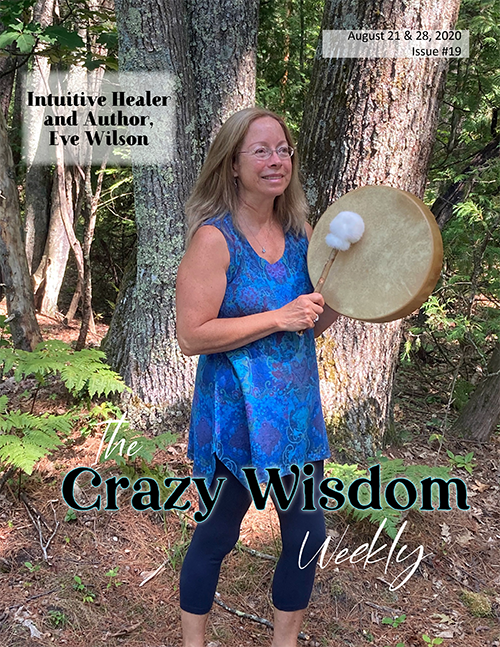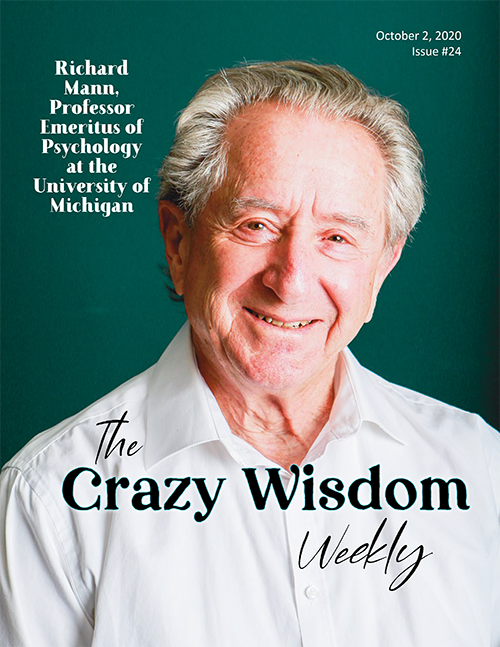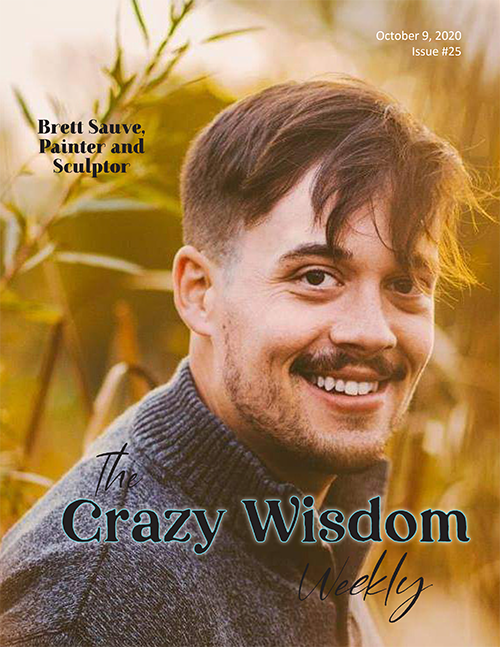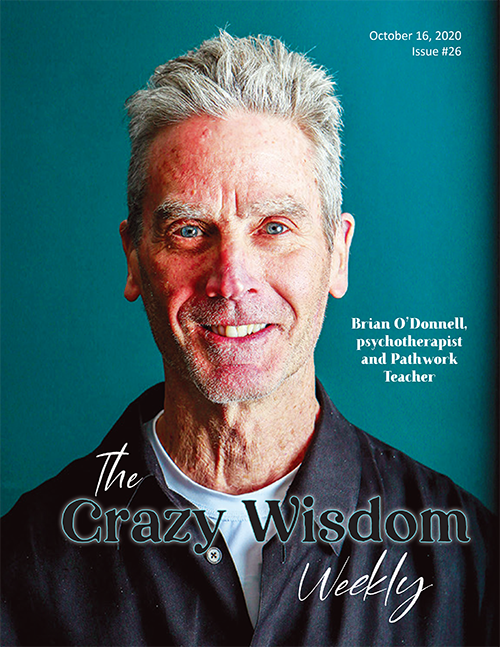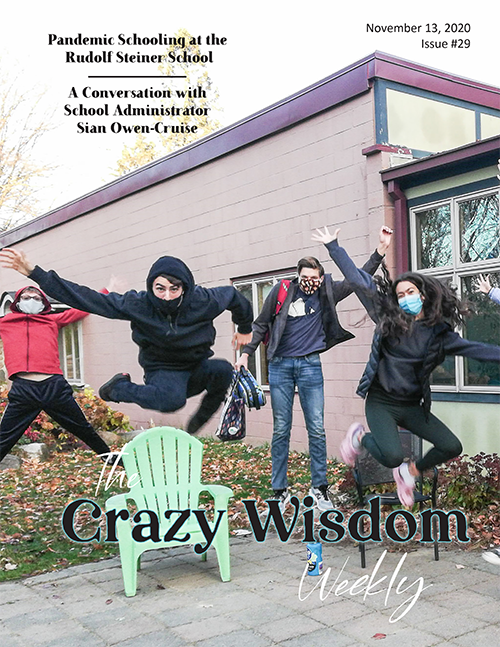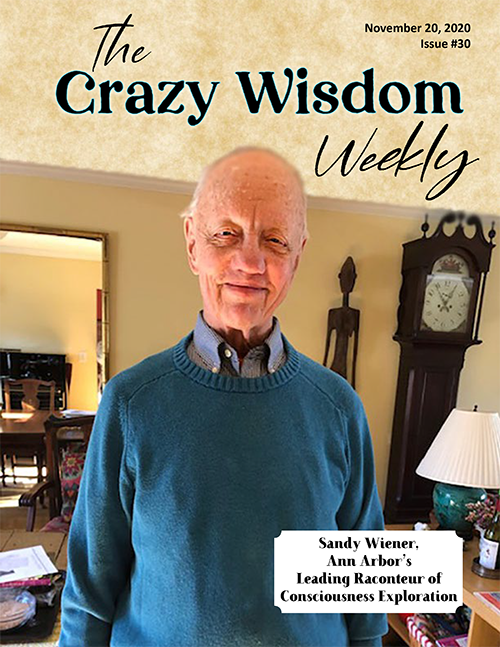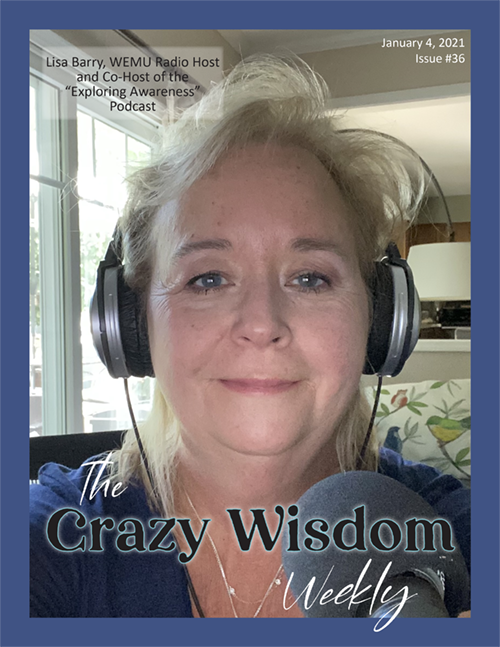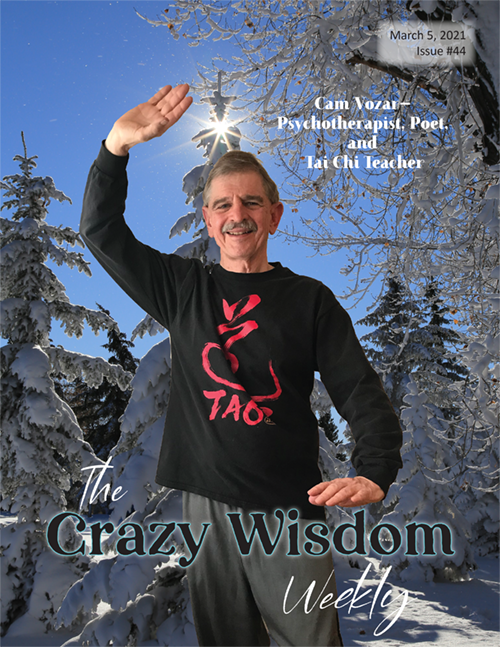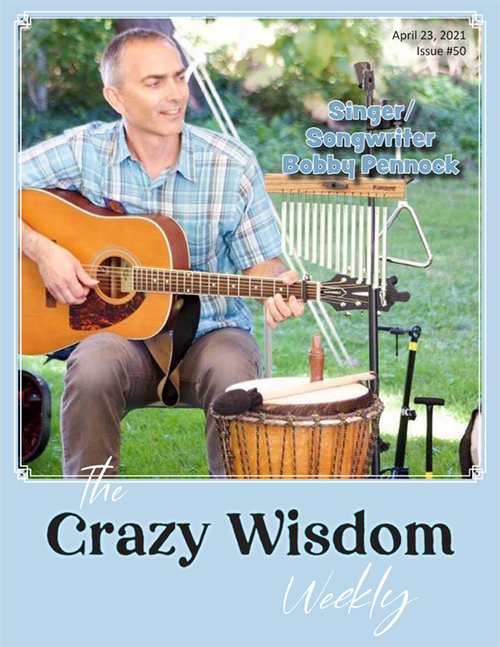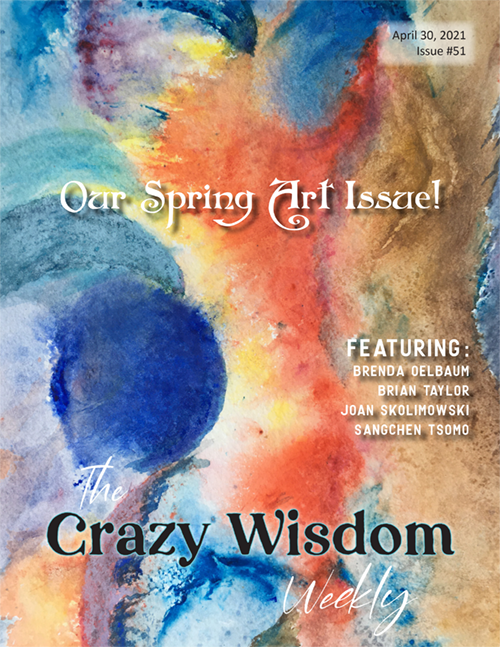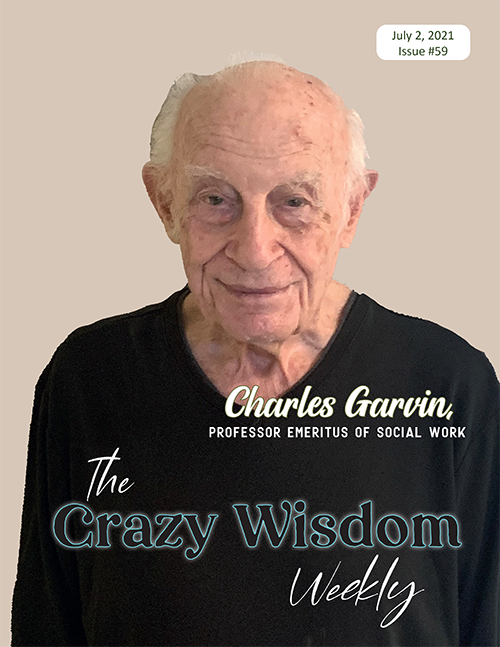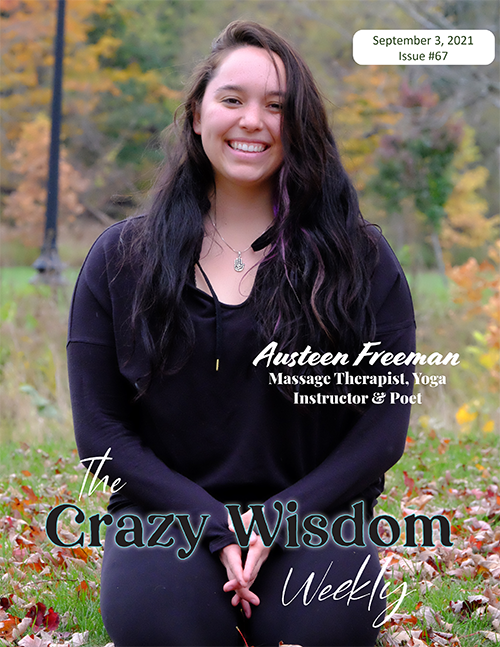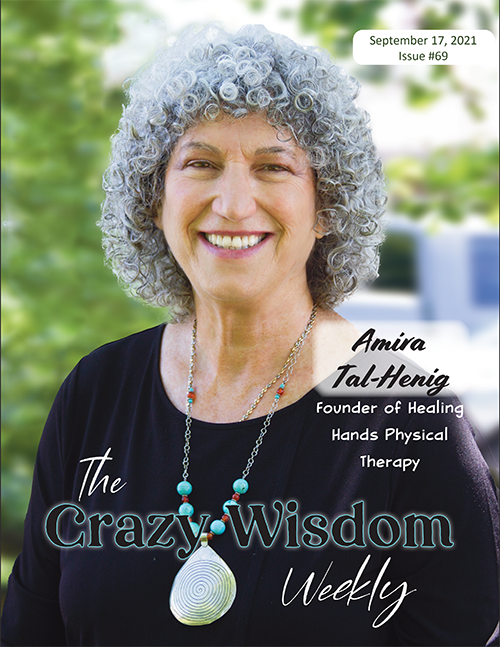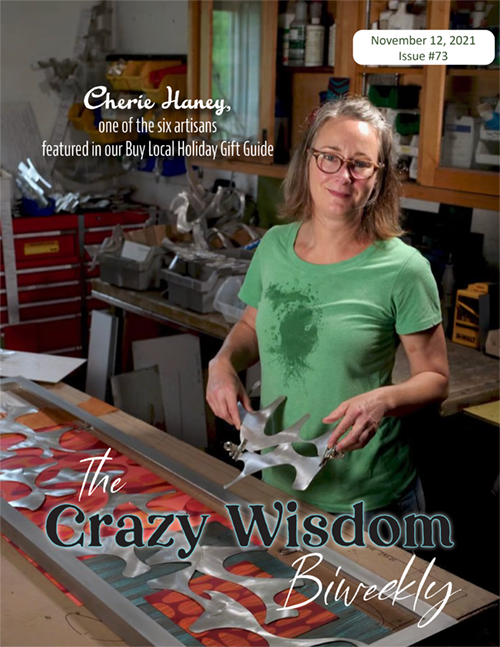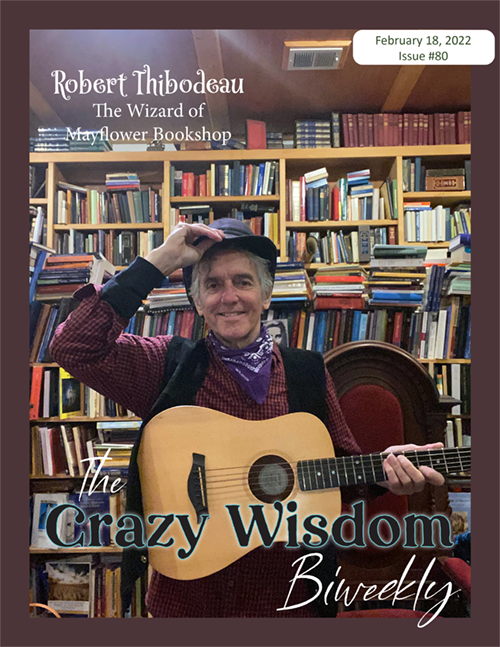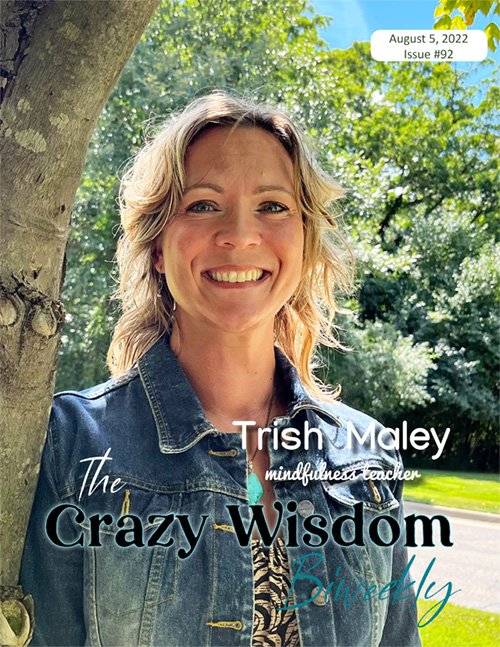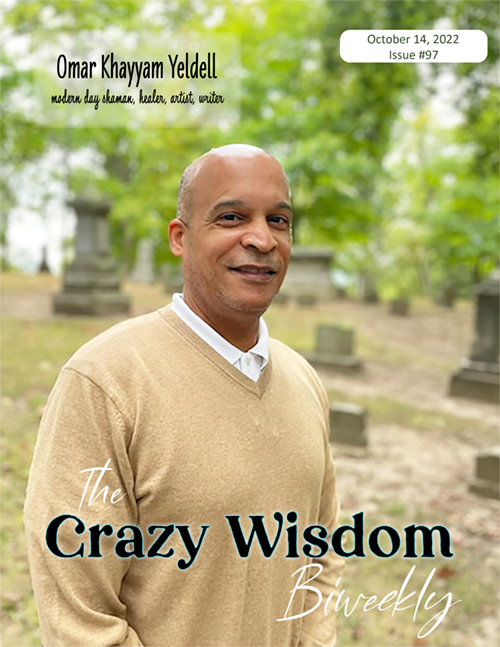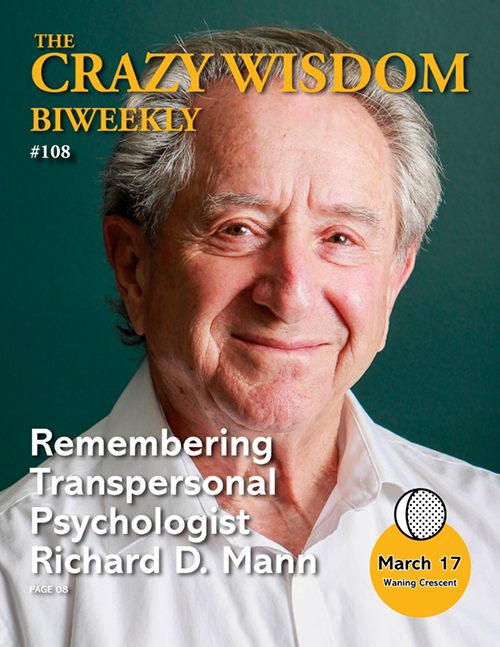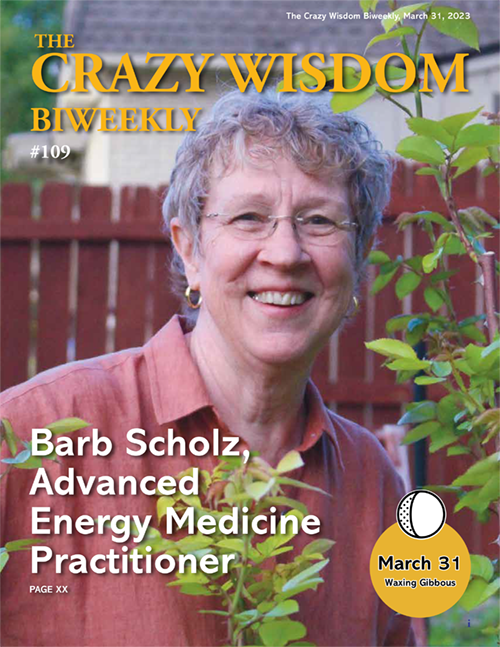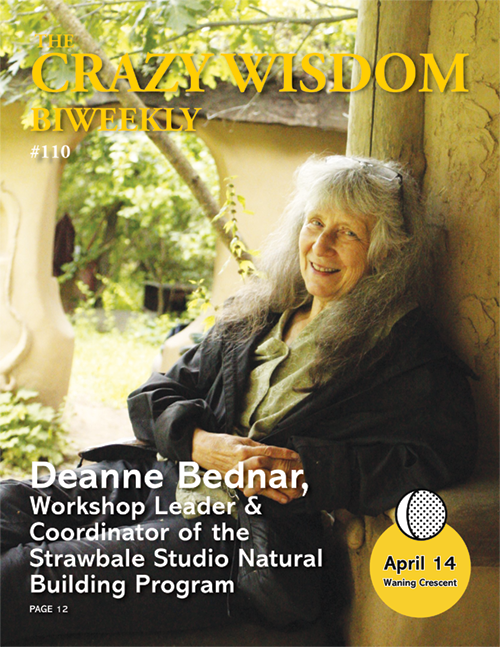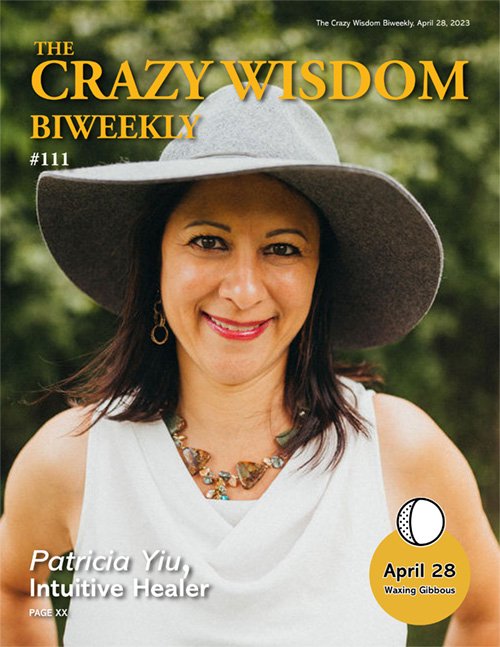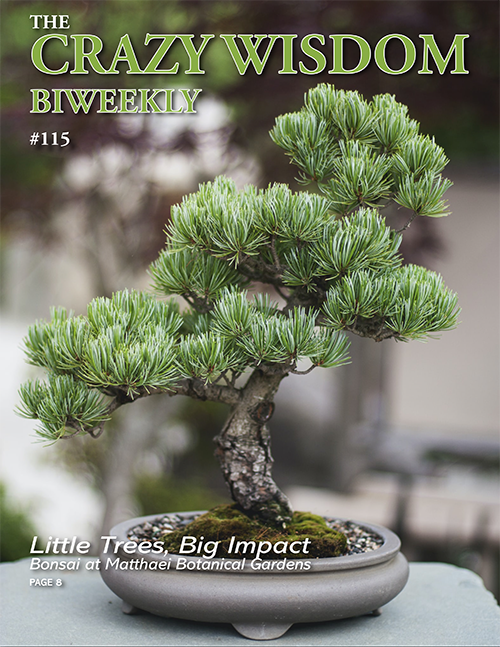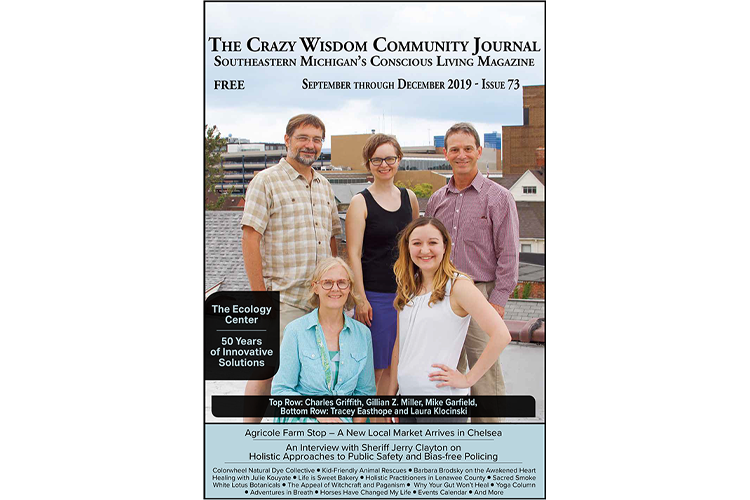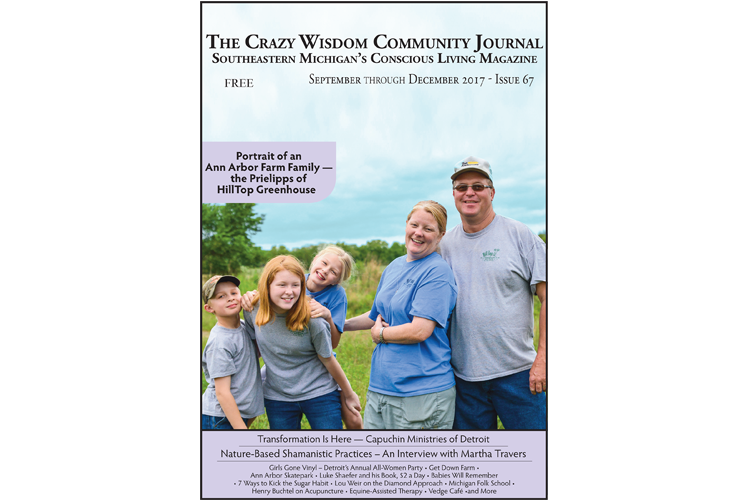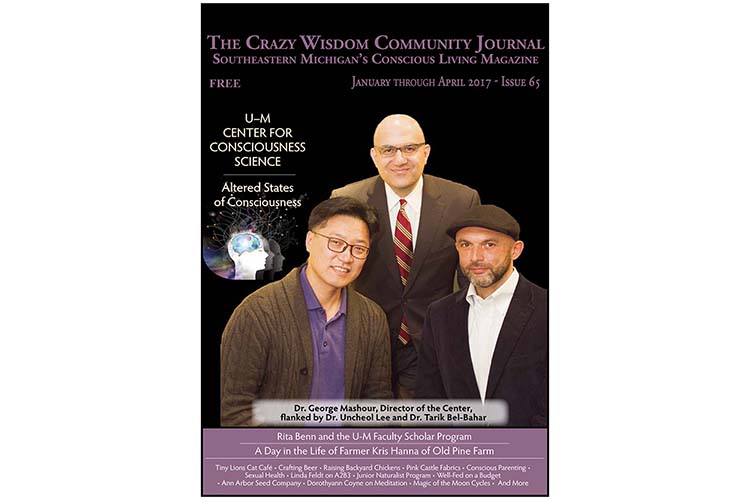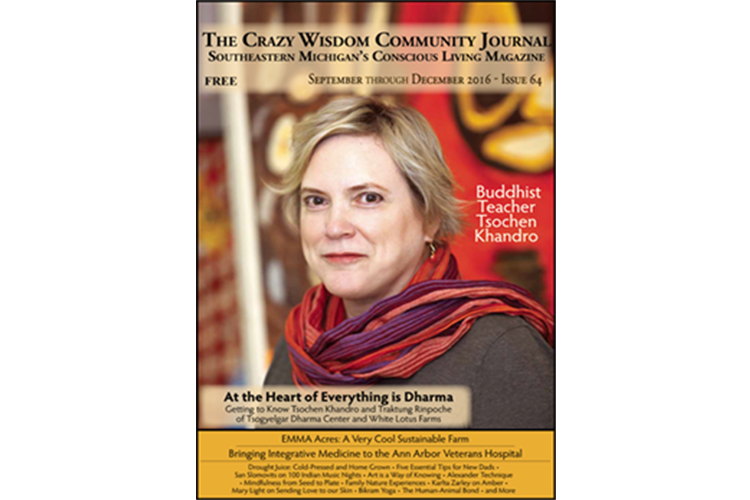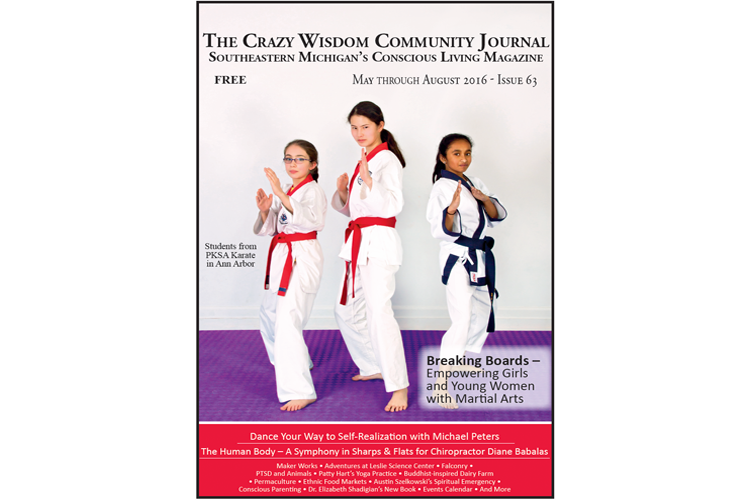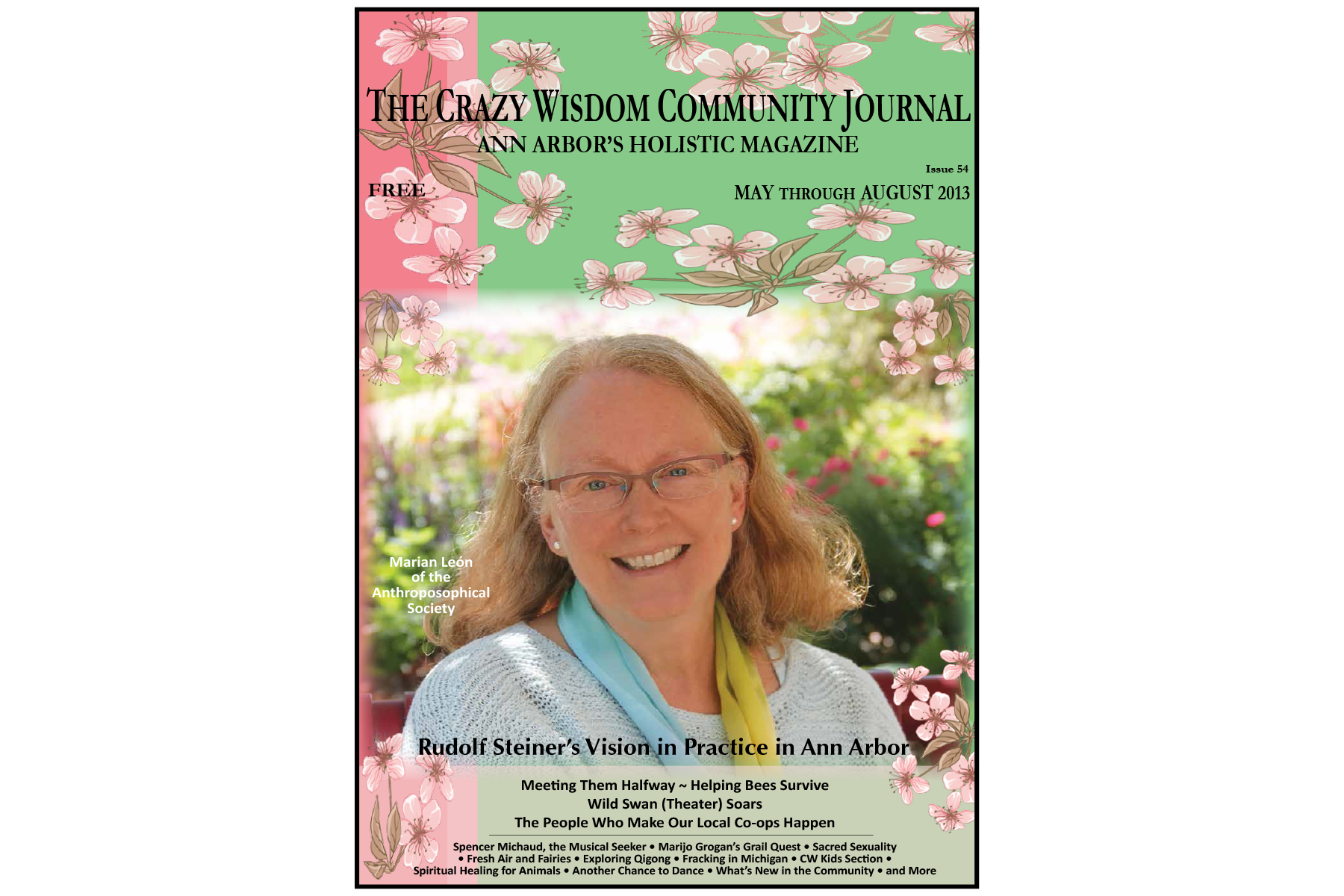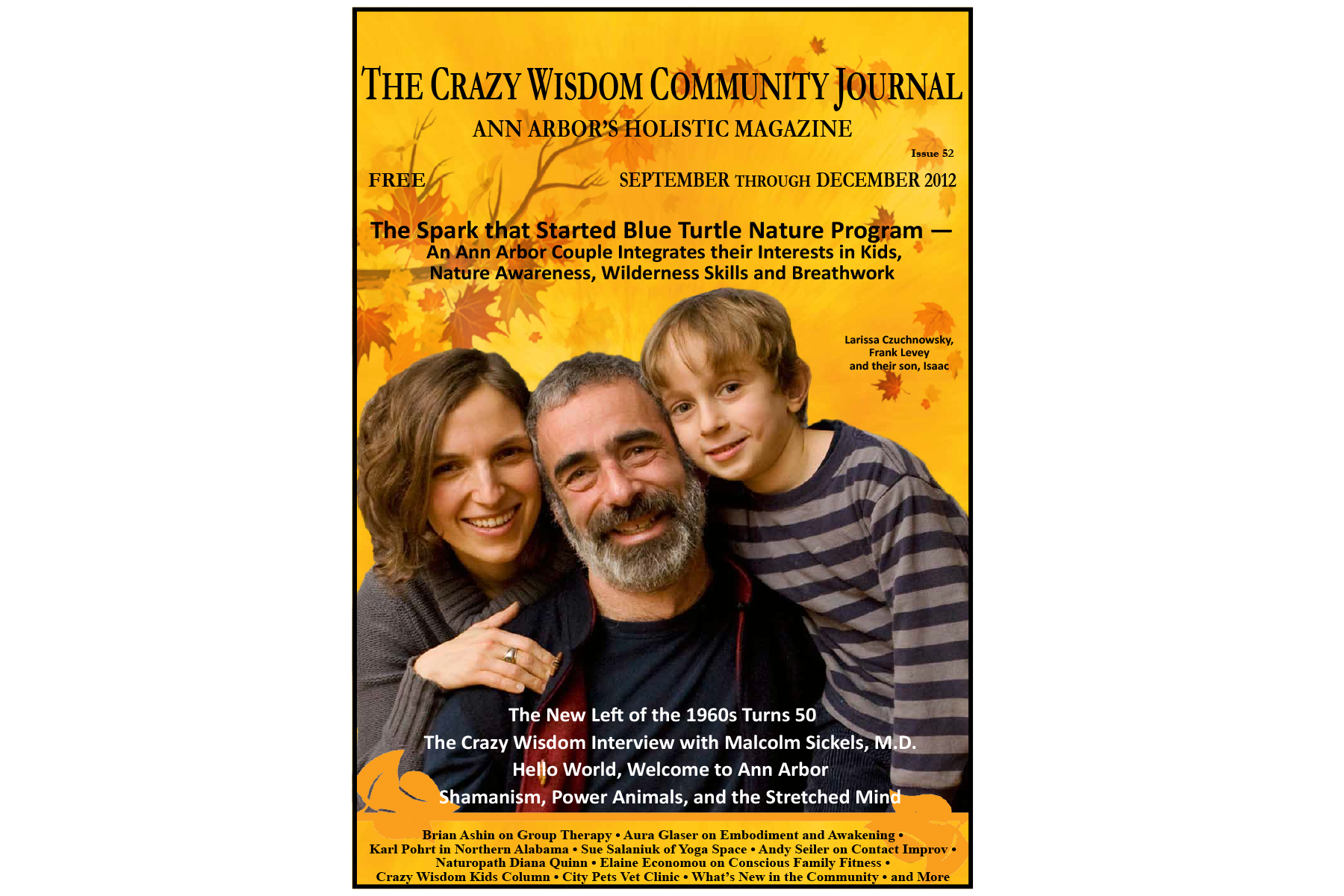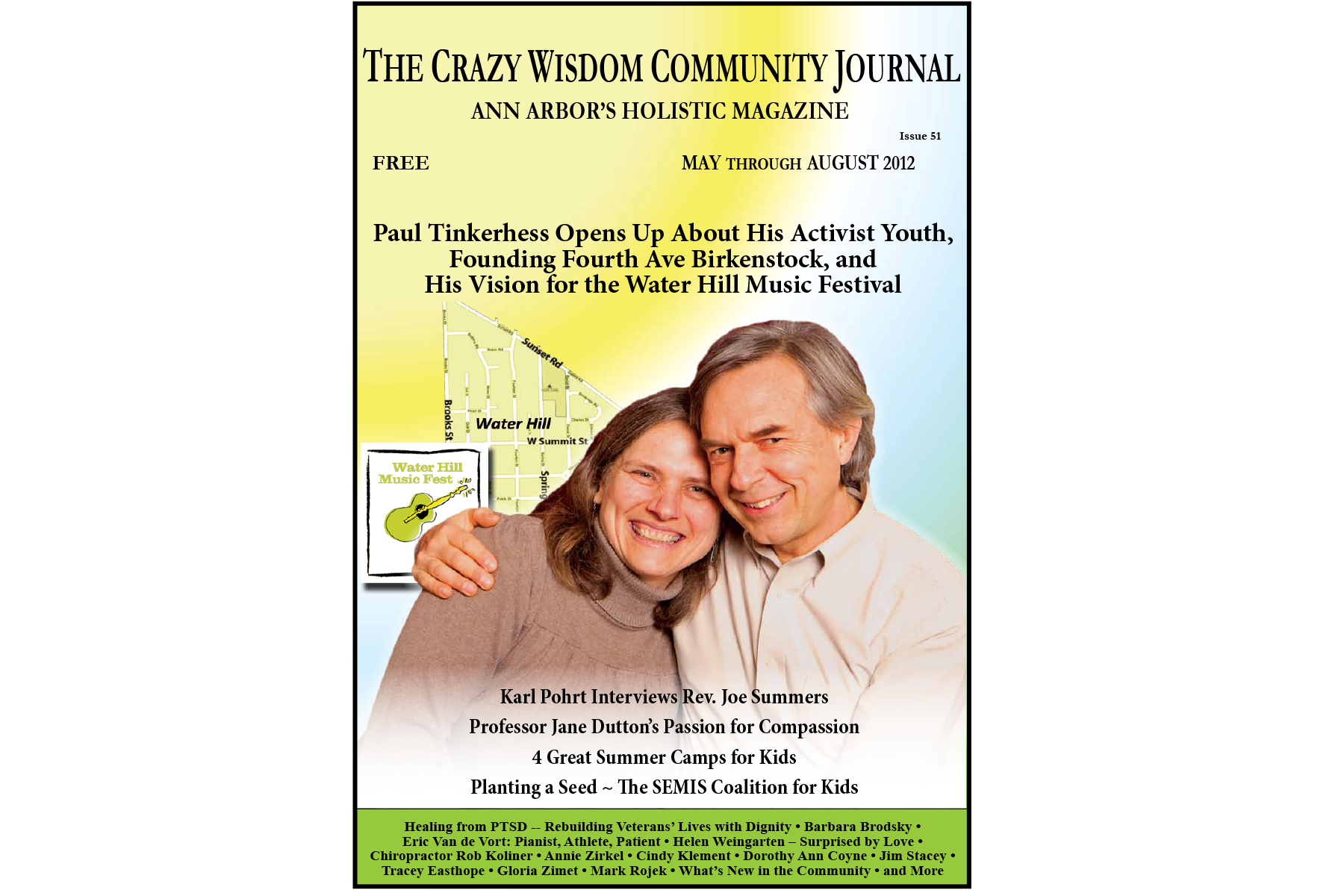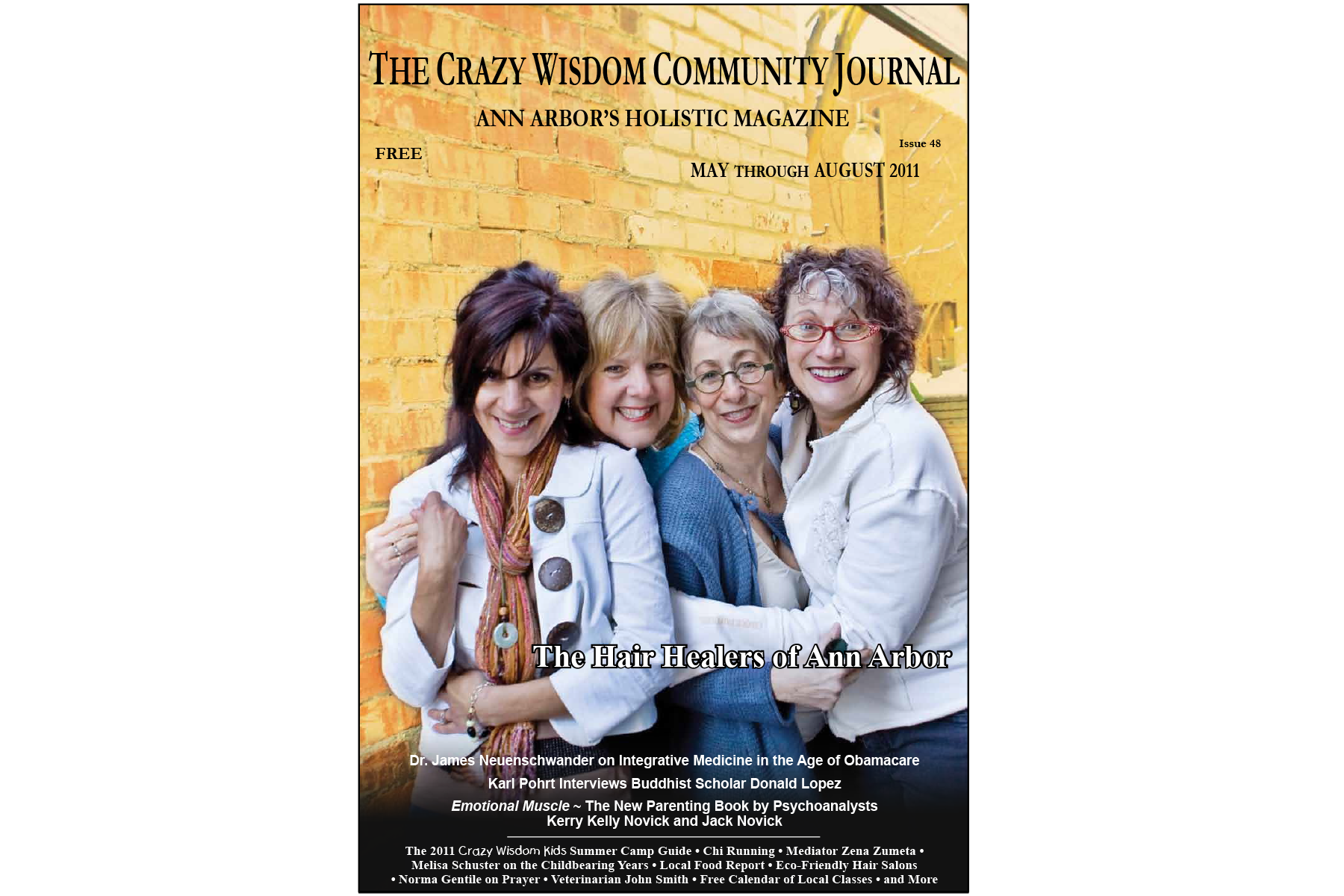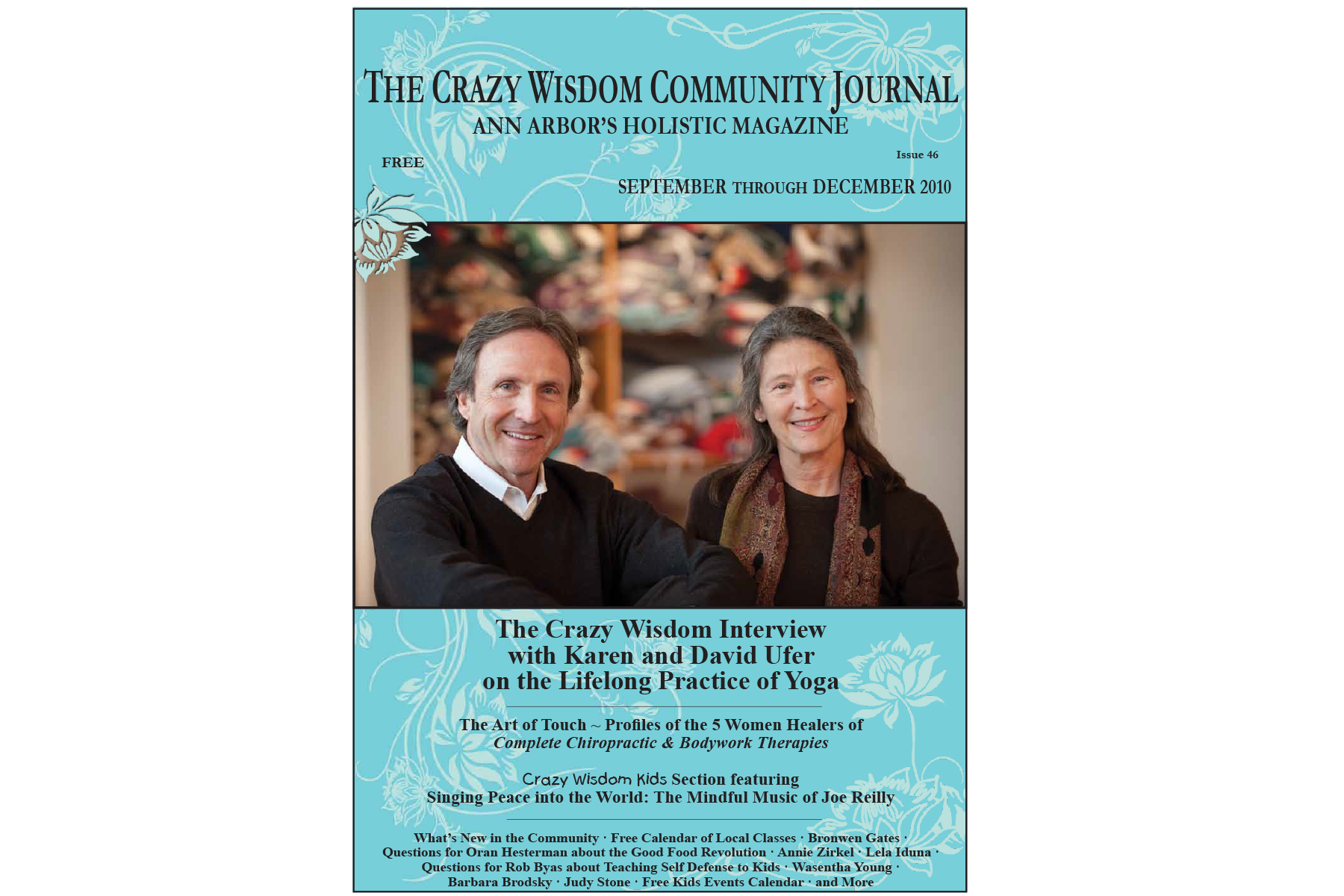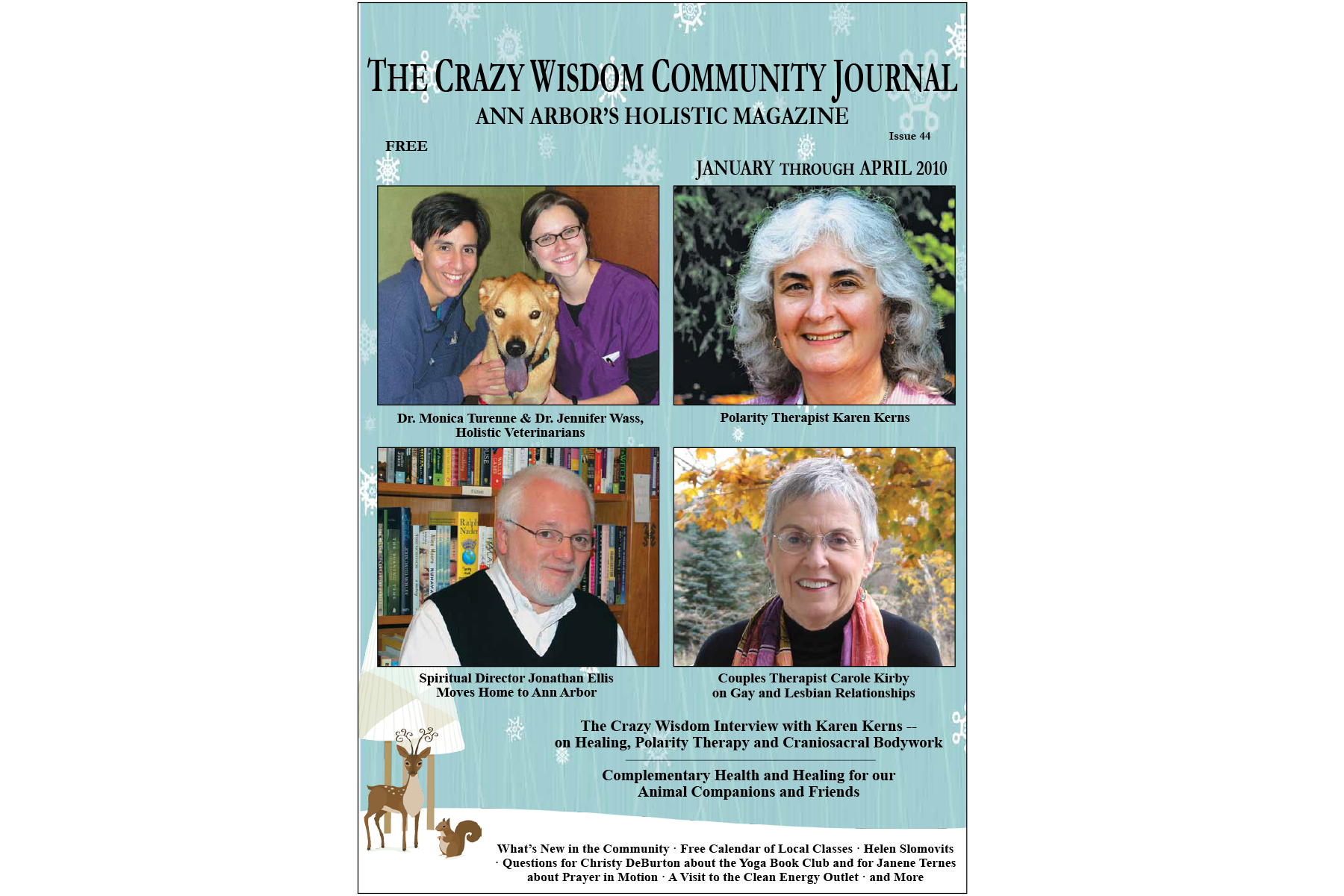April brings in its first day with a little foolin’ around. Welcome The Fool, and let the invitation of his/her energy begin the Journey of the Major Arcana. Out of all the 78 cards in a traditional Tarot deck, The Fool (0) begins the journey. Over the next few weeks, in tandem with whatever other inspirations the cards and numbers invite us into, I will be taking you on the Path of the Major Arcana. What better way to begin this trip than April Fool’s day.
Taking Care of the Pet Parent
By Monica Turenne, D.V.M.
Imagine if your pet was diagnosed with a terminal illness, and a specialist or your family veterinarian told you that your pet now has a very limited life span. This is a scenario that every pet parent fears.
Understanding Adrenal Fatigue
By Gary Merel
Adrenal Fatigue: What is it?
With more and more stress at home and at work, it is unsurprising that adrenal fatigue is on the rise. The pressures of life put many in a constant state of “fight or flight,” leaving our adrenal glands working overtime until they can no longer keep up. Adrenal fatigue is a direct result of this overworked, stressed, and rushed lifestyle, and can result in some serious health consequences in both the short and long term. Unfortunately, some medical doctors only treat patients for adrenal fatigue when these patients exhibit symptoms of Addison’s disease (extremely little adrenal function) or Cushing’s disease (hyperactive adrenal function). Addison’s and Cushing’s disease are on opposite ends of the spectrum, and only affect 2% of the population. However, some experts believe that over 80% of the population suffers from some level of adrenal malfunction. In the following article we will describe what the adrenals are, their role in the body, and some simple methods for determining how effectively your adrenals are working for you.
“Some experts believe that over 80% of the population suffers from some level of adrenal malfunction.”
What are the adrenal glands?
The adrenals glands are walnut-sized glands located above the kidneys. Each gland is composed of two separate functional entities. The outer zone, also known as the adrenal cortex, is comprised of roughly 80-90% of the glands size and secretes adrenal steroids (Cortisol, DHEA(S), estrogen, testosterone, and Aldosterone). The inner zone, or medulla, accounts for roughly 10-20% of the gland, and is responsible for secreting adrenaline. Cortisol, DHEA and adrenaline are the three main adrenal stress hormones.
What is cortisol?
Cortisol helps us meet the big challenges of the day. It converts proteins into energy and counteracts inflammation. In short bursts, it is very useful. In urgent situations, cortisol can increase heart rate, blood pressure, release energy stores for immediate use, slow digestion and non-emergency functions, and sharpen senses. Our bodies are not meant to maintain these states for very long, nor enter into them very often.
It can be very detrimental when cortisol release is sustained at high levels for long periods of time. Over-production of cortisol means the underproduction of other necessary hormones. We remain stuck in a state of overdrive while our energy levels, bone health, muscle production, mood, joints, sex drive and immunity all suffer.
“Over-production of cortisol means the underproduction of other necessary hormones. We remain stuck in a state of overdrive while our energy levels, bone health, muscle production, mood, joints, sex drive and immunity all suffer.”
The Adrenal Rhythm
The human adrenal gland releases cortisol in a cycle with the highest value released in the morning, the lowest value released in the evening. This 24-hour cycle is known as the circadian rhythm. These hormones help supply us with the necessary energy we need throughout the day.
“The human adrenal gland releases cortisol in a cycle with the highest value released in the morning, the lowest value released in the evening.”
How Modern Life Contributes to Adrenal Malfunction
Unlike our ancestors, we live in a state of constant stress. Instead of sporadic, immediate demands followed by rest, we live in a world of constant communication, fast food, environmental toxins, and worry. It’s no wonder that many adults suffer from adrenal malfunction. That’s why it’s important to keep on the watch for these 7 common signs and symptoms of abnormal adrenal function.
9 Most Common Signs and Symptoms of Abnormal Adrenal Function
1. Low energy. Abnormal adrenal function can alter the cells ability to produce the correct amount of energy for the day’s activities. People who struggle to wake up and keep themselves going through the day often have abnormal adrenal rhythms and poor blood sugar regulation. Additionally, cortisol levels control thyroid hormone production. Fatigue and low body temperature, symptoms of hypothyroidism, can be attributed to adrenal malfunction.
2. Behavior, mood, and memory problems. Cortisol regulates the electrical activity of neurons in the brain, greatly influencing behavior, mood, and memory. Symptoms include depression, decreased tolerance, clarity of thought, memory, and memory retrieval.
3. Muscle and joint pain. Abnormal adrenal function can compromise tissue healing, often leading to breakdowns and chronic pain.
4. Weak bones. The adrenal rhythm determines bone health. If our cortisol levels are too high, our bones will not rebuild well and will become more susceptible to osteoporosis.
5. Poor Immune System Health. The immune system’s white blood cells follows the cortisol cycle. If the cycle is disrupted, the immune system cells will not receive the conditioning, nourishment, and instructions necessary to protect the body. These immune system failures can be seen in the lungs, throat, urinary and intestinal tract, leading to increasing susceptibility to infection and allergy onset.
6. Asthma, bronchitis, or chronic cough. The lungs react poorly to stress. Asthma is often considered an emotional disorder because stress can trigger attacks.
7. Un-restful Sleep. When cortisol values are high at night, REM sleep cycles are more difficult to achieve. Chronic lack of restful sleep reduces mental vitality, bodily strength, and can induce depression.
8. Skin problems. Human skin regenerates when we rest at night. High cortisol values during the evening reduce skin regeneration.
9. Food allergies, specifically to gluten. Genetic intolerances to grain can inflame the gut and spur an adrenal stress response. Since almost ¼ people living in the U.S. suffer from gluten intolerances, this is a common cause of adrenal malfunction.
What to Do if You have Abnormal Adrenal Function
If you or a loved one experience any of the above symptoms, it is crucial to visit a health practitioner. Here are some suggested supplements that can help with adrenal fatigue:
1. Ashwaganda is part of a class of adaptogenic herbs, known for their ability to generally strengthen the body and protect against daily stress. Ashwaganda is often referred to as the Indian ginseng. Prevalent in Ayurvedic medicine, it minimizes anxiety by lowering cortisol levels and boosts the immune system. It also helps combat stress-induced sleeping problems. Ashwaganda is available in tablet, capsule, and liquid forms.
2. Eleuthero Root. Also known as “Siberian ginseng,” this adaptogenic herb reduces stress hormones, improves athletic performance, speeds up recovery time post-illness, sharpens memory, minimizes fatigue, and generally enhances feelings of well-being.
3. Vitamin B5 or Penicilic Acid. All 8 of the B vitamins help the body convert food into fuel so we are energized to go about our days. They also keep our skin, hair, eyes and liver healthy, and make sure our nervous system functions properly. In addition to the work listed above, B5 plays a critical role in regulating the production of stress hormones. A deficiency in B5 could lead to fatigue, insomnia, depression, and irritability, among many other symptoms.
4. Vitamin C is used at higher rates during times of stress, so getting enough is crucial for keeping the body healthy in the face of life’s challenges. Since the body does not produce vitamin C itself, our body depends on our diet and supplements to provide this crucial support. The typical dosage for vitamin C is between 2,000 and 4,000 mg per day, though it does vary.
Gary Merel, M.S., L.A.C., has an acupuncture and holistic health, nutritionally based practice in Ann Arbor. For more information about his practice, go to www.annarborholistichealth.com or call (734) 222-8210.
Related Articles:
The Mosaic of Our Lives
In the art therapy stories I've shared thus far, I have explored various themes of change. The need/want for it, on the one hand, and the mechanism/process toward it, on the other
Faster Than a Speeding Bullet: Freight Trains and the Art of Meditation
By Lenny Bass
It’s 4:30 a.m., and I’m sitting in the hot tub in the back of our little home at the edge of Delhi Park. A sliver of moon slides shyly between fast moving clouds, and off in the distance, a family of coyotes are howling away. It is not unusual for me to be up at this hour of day; it has become a habit of mine ever since I lived at the Zen Buddhist Temple in Ann Arbor in my late 20s. Now I am 53, and I’ve become wedded to this hour as a kind of prime time for my sitting meditation. The family is gainfully asleep. The streets are barren and pin-drop silent. And there is a kind of vibrational hush that draws me in and allows me to listen deeply to the spaces between my rambling thoughts.
“Sometimes they are quick bursts, flashes in the pan, gone before the earth knows what hit it. Other times, they are like a long, thunderous ovation, squealing rails and the earth shuddering beneath a behemoth’s raucous stampede.”
But on this particular morning, I am drawn to something other. Off in the distance, barely detectable to the human ear, a faint whistle can be heard. We live just a few blocks from the railroad tracks, and I know instantly that a freight train is headed our way. During normal, “sane” hours, we’ve learned to tell time by the regularity of the whistles that pass by our home. But these are trains with schedules, Amtrak trains coming from or going to Chicago. In the “off” hours, however, a random conglomeration of freighters have free access to the rails. Their timing is unpredictable, but I know in an instance what’s coming, and the only question I have is, how large? Sometimes they are quick bursts, flashes in the pan, gone before the earth knows what hit it. Other times, they are like a long, thunderous ovation, squealing rails and the earth shuddering beneath a behemoth’s raucous stampede.
I sit back in the tub and wait for my answer. Finally, the magnificent rumble is upon me and it goes on and on like some kind of primordial tantrum. The thing is massive and I’m instantly awed by the way its magnificent vibrato hits me square in the solar plexus from more than three blocks away. What incredible power we have come to wield, I’m thinking to myself as it passes by. The momentum and density of our existence have a kind of trajectory that seems virtually unstoppable. I imagine how long it would take to bring the thing to a halt by applying the brakes. A mile? Two miles? More?
“It occurs to me that meditation practice is like this. It is just like trying to apply the brakes to a hundred car freight train in motion...with a tweezers no less!”
It occurs to me that meditation practice is like this. It is just like trying to apply the brakes to a hundred car freight train in motion...with a tweezers no less! How long would it take to stop a train of this magnitude with a pair of ordinary hand-held tweezers? This, I believe, is meditation...in a nut shell. At least in the beginning, I would say.
“When people first come to their meditation practice and sit for a while, often they are surprised to find out how hard it is to derail their thought processes.”
When people first come to their meditation practice and sit for a while, often they are surprised to find out how hard it is to derail their thought processes. No matter how hard they try, the thoughts just keep on coming. I must not be doing it right, they might
think to themselves. But we have to imagine ourselves just like this freight train. Each of us brings to our practice the incredible weight and volume of our entire life history from the moment we separated from the womb and began buying into the notion of ourselves as individual beings. The ego — this separated sense of self — invests incredible amounts of energy in discerning its likes and dislikes, its wants, needs, tastes, aversions, goals, dreams, fears...on and on; it builds itself like a freight train, car after car after car. It motors itself up mountains, through valleys, across flatlands, using any and all available raw material to add to the case of its undeniable existence. How intense an undertaking, then, to imagine slowing the thing down. Could it even be possible to stop the thing altogether!
“The ego — this separated sense of self — invests incredible amounts of energy in discerning its likes and dislikes, its wants, needs, tastes, aversions, goals, dreams, fears...on and on; it builds itself like a freight train, car after car after car.”
Having done this a while, I don’t think it is much of an exaggeration to suggest that, at first, our meditation practice can have the feel of “applying tweezers to a freight train”. But rather than being disheartened by this realization or giving up on the practice altogether, it is better if we simply gain the awareness of what we are actually up against. The weight of our momentum is an awesome force. It has been this way for so many years. What makes us think that the minute we decide to sit down and meditate, everything will simply fall away?
When we first come to practice, it may be all we can do to simply “watch the train cars passing by.” We pull up a lawn chair, so to speak, and sit at the edge of the tracks, and...O. M. G...what an awesome contraption! The thing won’t stop. I tell it to stop. But it doesn’t stop. So, now, maybe I’ll just count the cars as they pass on by. Two- thousand five-hundred and eighteen, two-thousand five-hundred and nineteen....where does it end, we may wonder.
“Little by little by little, sit after sit after sit we begin gaining an awareness of the space between the cars, that tiny blip of expansive fresh air between fast moving objects.”
This very realization is a wonderful beginning point. For, once we see what we’re up against, then we can begin working with “the tweezers,” as it were, to slow it all down. Little by little by little, sit after sit after sit, we begin gaining an awareness of the space between the cars, that tiny blip of expansive fresh air between fast moving objects. The cars were moving so fast in the beginning, we didn’t even know it was there! But now they’ve slowed down just enough that we see it...a view of the horizon that goes on and on, seemingly forever. And seeing it for the first time....wow, how amazing is that!
Suddenly we have great hope and great impetus to continue onward, for that space between the fast moving train cars seems to bring us such peace. We’d much rather live there than on a fast moving train!
Finally, the freight train has passed (the real one, that is...) and I come back to my breath while sitting alone in the tub. Next, it is to my mat and cushion for a half hour of sitting before the family arises. My own thoughts will keep coming, just like the train that went by...but I’ll also see those vast empty spaces as well, more and more as my years of practice continue.
May we all derail our inner freight trains...with tweezers, forceps, clamps, tongs, whatever we can find! And may we all awaken to those spaces between the cars!
Lenny Bass is a long time meditation practitioner with deep ties to the Zen Buddhist Temple of Ann Arbor. His essay "Swaying in the Sangha of Trees: The 'Tree'-Quel" appeared in the January through April issue. You can read the first installment here. Leave a comment for Lenny below or contact him at oneononemeditation@yahoo.com.
Hello and a Big Welcome.
Let’s take a big inhale… and let that all out. Again. Aaaahh.
This is the first of my regular blog posts; I’m excited. Thanks for your visit and support.
This first entry will give you some of my feelings and thoughts about what I imagine this blog to be. And what it might be for you, as you follow and engage with it. Though I have a poet’s heart and a storyteller’s ramble, I won’t be making this ramble again in the same way.
I will reference this first blog to newcomers so ya’ll get an opportunity to know how the Spirit moves in and through me. I will be adding things in as time unfolds: like books to read and Tarot cards to buy from Crazy Wisdom Bookstore; ways to lay out the cards for your own readings; information on numerology and elements; classes that might interest you, and so on. I am interested in what inspires you and what you might like to discuss here and feel comfortable discussing in this parameter. I would love to hear your feedback, questions, and comments.
My intention is to invite the wisdom of Tarot cards, their elemental nature, their numbers, and stories into an inspirational experience that calls up your wisdom and awareness. Let’s stir up the pot of creative possibilities! Let’s be reminded of what we hold most sacred in our daily lives: love, joy, family, friends, sensorial experiences, peace, well-being, more love, more joy. . .
Read More . . .
Heart Disease: What You Need to Know
Pretty much everyone has been touched in some way by heart disease, and the scary part is that many people don’t know they are at risk until it’s too late. How come we’re left in the dark?
Won’t You Sway...Just A Little Bit Longer: A couple more thoughts from the tree talking man...
By Lenny Bass
In the two articles I wrote for the Crazy Wisdom Community Journal entitled “Swaying In The Sangha Of Trees” (the second one being “The Tree-quel”), one of the basic ideas I was hoping to convey through my conversation with the tree was the possibility, through meditation practice, of cultivating the ability to persevere through difficult situations, whatever they might be.
“When the storms come,” the tree told me, “we trees sway. In this swaying, the soil beneath us is loosened and our roots are allowed to grow.”
Human beings, of course, are very different than trees. When the storms come, trees have very little choice other than swaying. They cannot “get into their mobility carts,” as the tree liked to call it, and flee. Human beings, however, can do just that. They can get into their mobility carts and flee whatever storms come their way.
If you stop to think of it, the premise of this very country itself was built upon this simple formula. It is based upon a group of people — in this case Europeans — fleeing in their “mobility carts,” otherwise called boats. They fled the hardships imposed upon them by an uncompromising monarchy and sought to create a better situation for themselves elsewhere. Somehow, somewhere in this country’s DNA since the time of its inception, is the notion that the way to make things better is to get into a mobility cart and flee. There are umpteen bazillion versions of this, if we really look with any amount of depth and honesty.
“It begins with a perception: what ‘is’ is not good enough. What ‘is’ could be made better. What ‘is’ makes us suffer. What ‘is’ is unsatisfactory.”
It begins with a perception: what “is” is not good enough. What ‘“is” could be made better. What “is” makes us suffer. What “is” is unsatisfactory. And suddenly, we are off. In our mind’s eye, we have a strategy for improvement; a better education, a better job, a better marriage, a better house, a better climate, more sun, less snow, and on and on.
We create a plan — a life plan, if you will — and we are on a path to get there, wherever it is our mobility carts are taking us.
The true gift of a meditation practice in which we become adept at learning how to sway is that it shows us in no uncertain terms the fallacy of the formula. If we track the process from beginning to end, we see the very same progression of events manifesting time and again. At first, we are happy to have found a path through which life may be made better. We follow this path with all due diligence until we have achieved our goal. Suddenly, we have it...whatever “it” is. We have the better job, the better house, the better husband or wife, the better climate. And then...it is “honeymoon” time. We happily relish whatever it is we have accomplished to make our lives better. Everything is wonderful and new and exciting. Then, continuing to track it, it grows, over time, to become “common place.” The sparks wear off, the cracks start to show. The new boss is a jerk, the new wife has wrinkles. We’re sick of the sun and wish it would snow. The new house has that much more maintenance we hadn't counted on. And so...we’re back to square one. How can we make it “better”? What is our new strategy? Move back to the old climate? Get a another new job? Find a new country to call home?
On and on it goes....until finally, somehow, sometime, we catch on. Getting into our mobility carts just isn't working. The process is always the same. The outcome never lasts. We’re always, time after time after time, back where we started. Dissatisfaction.
“It is from this place that I believe ALL true meditation practice is born. And, it starts with a kind of commitment NOT to flee. To hang in. To persevere with whatever it is that is dissatisfying.”
It is from this place that I believe ALL true meditation practice is born. And, it starts with a kind of commitment NOT to flee. To hang in. To persevere with whatever it is that is dissatisfying. In sitting meditation for long hours, the mind does everything it can think of to try to get us to flee. It’s boring. Our knees are hurting. It is a waste of time just sitting here doing nothing. It is “unproductive.” It won’t make things better. On and on, the mind keeps sending us these thoughts hoping to get us into another round of the formula we know just doesn't work. Sometimes we acquiesce; it is a habit, after all, this perpetual fleeing we have learned to do. Learning to “sway” with our circumstance just isn't in our vernacular. It’s never been taught to us. It is counter intuitive to “do nothing” about a bad situation.
And yet, as we continue to sit with whatever our circumstance happens to be, a transformation begins to unfold and a whole new way of life starts revealing itself to us. The longer we hang in there, the more we see it. No circumstance in life will EVER make us happy, for it is in the very nature of a circumstance to always be the victim of impermanence. Everything is forever changing. Nothing lasts forever. We are simply on a wild goose chase if we think our lives can be made better through a ride on a mobility cart.
We awaken to the moment, whatever that moment may hold. We embrace the moment, with everything it has to offer, the goodness, the badness, whatever it happens to be. Our circumstance is just a circumstance. Whatever it is, whether we like it or dislike it, it will change. Suddenly, we are free of the impulse to flee whatever it is. We gain the capacity to simply work with it, deal with it, negotiate with it, dance with it. By doing so, the circumstance itself becomes more pliable, more receptive, more amiable and amendable. What we thought was so very awful transforms before our eyes. Likewise, that hefty pot of gold becomes “eh, so what?” That too will change.
This is the gift of learning how to sway that I think would make the world a “better” place to live in (there he goes again....I hear you say!) Okay, maybe better isn't the right word. There is a temporary happiness that comes from changing a circumstance in our lives. There is a permanent happiness that comes from going beyond circumstances and embracing the moment. There are a thousand strategies to be temporarily happy....but just one to find a way that lasts. May we all learn to sway....just a little bit longer!
Lenny Bass is a long time meditation practitioner with deep ties to the Zen Buddhist Temple of Ann Arbor. His essay "Swaying in the Sangha of Trees: The 'Tree'-Quel" appeared in the January through April issue. You can read the first installment here. Leave a comment for Lenny below or contact him at oneononemeditation@yahoo.com.
Related Content:
